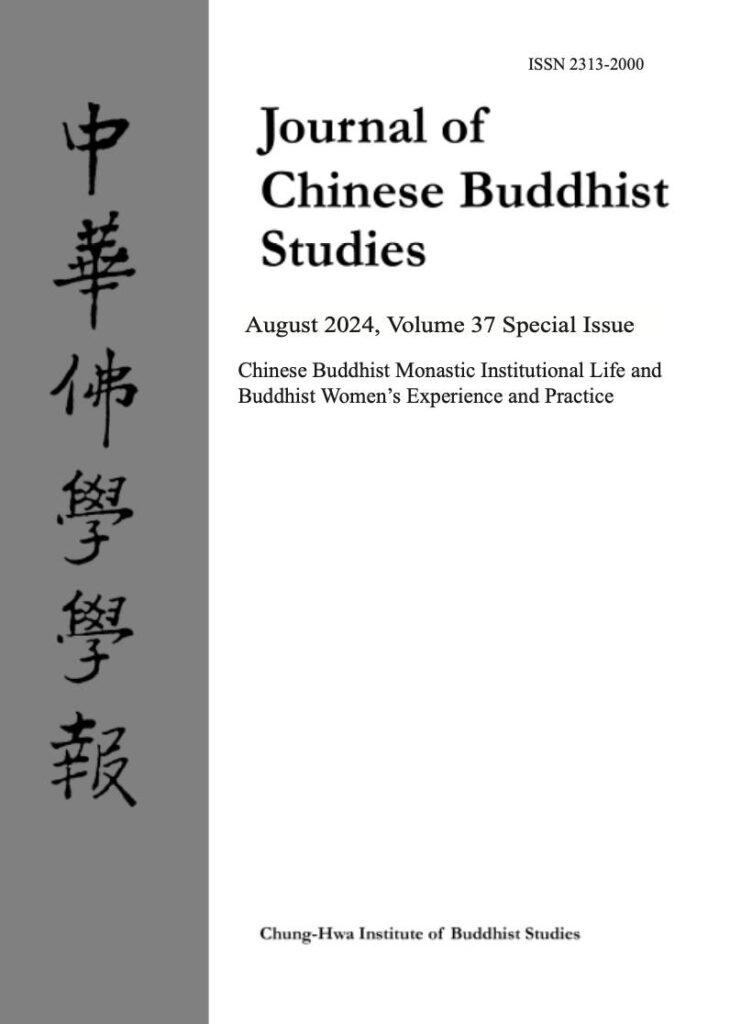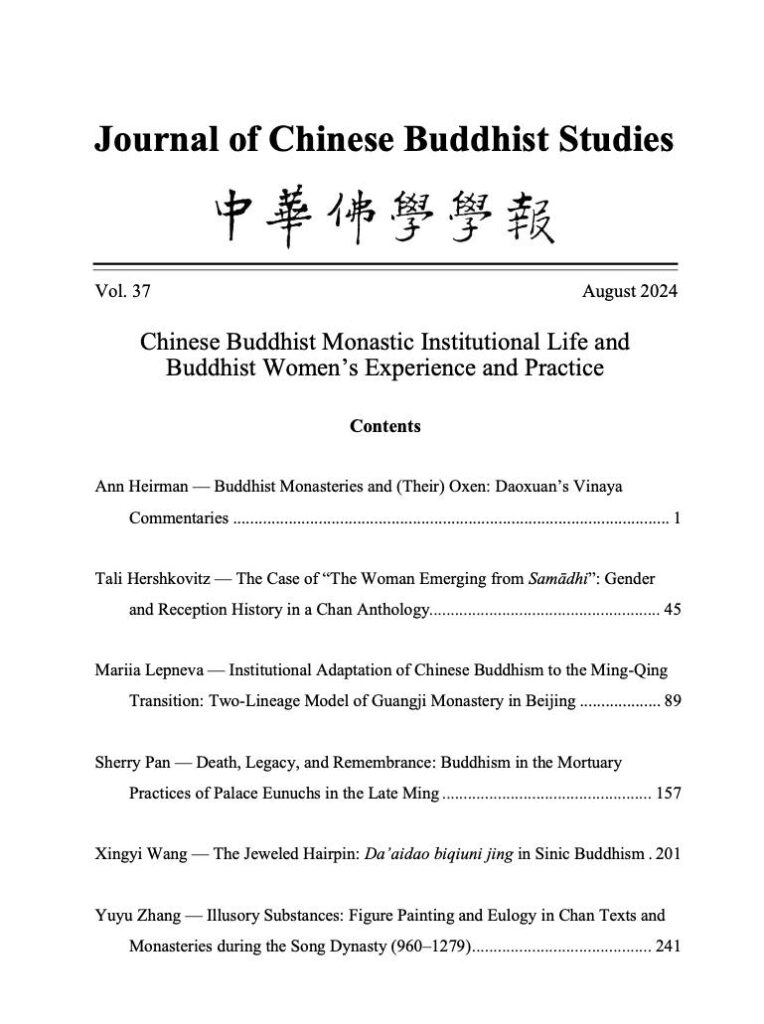Articles from two GCBS researchers have just been published in the Journal of Chinese Buddhist Studies, Volume 37, Special issue “Chinese Buddhist Monastic Institutional Life and Buddhist Women’s Experience and Practice” (August 2024). One is by the Head of the GCBS, Prof. Dr. Ann Heriman, and the other by FWO postdoctoral fellow Dr. Mariia Lepneva. For details, see below.


Abstract. Buddhist texts generally prohibit the killing and harming of all sentient beings. This is certainly the case in vinaya (disciplinary) texts, which contain strict guidelines on the preservation of all human and animal life. When these texts were translated into Chinese, they formed the core of Buddhist behavioral codes, influencing both monastic and lay followers. Chinese masters, such as the highly influential Daoxuan 道宣 (596–667), wrote extensive commentaries on and accounts of the vinayas to ease the introduction of Buddhist concepts into the Chinese environment. These texts comprise rich sources of information on material culture in Buddhist monasteries and beyond.
The subject of this paper is oxen and their complex relations with human beings, as discussed in the disciplinary texts. Oxen were commonplace in both India and imperial China, where they were bred and reared for agricultural purposes, and as draft animals. Depending on the context, they could be perceived as annoying, filthy, or useful. They were associated with improper behavior, seen as helpful or even indispensable, or viewed as the innocent victims of human misbehavior.
Yet, all these considerations were overshadowed by the Buddhist proscription against harming or killing any sentient being. Hence, the focus of this paper is Daoxuan’s interpretation of this principle in relation to the treatment of oxen, informed by his reading of Indian normative texts and his own Chinese context. As we will see, his guidance was complex, but he always attempted to remain true to what was—and remains—a central tenet of Buddhism.
- “Institutional Adaptation of Chinese Buddhism to the Ming-Qing Transition: Two-Lineage Model of Guangji Monastery in Beijing” by Mariia Lepneva
Abstract. The late Ming and early Qing periods witnessed a massive revitalization of Chinese Buddhism, particularly the booming rise of Chan lineages in the southern Jiangnan region throughout the seventeenth century. To date, scholarship has emphasized the continuity of this trend, largely uninterrupted by the dynasty transition. This paper supplements this picture by shifting the focus towards Beijing in the north and inquiring into the unusual two-lineage model that emerged at Guangji Monastery, which is nowadays well-known as the seat of the Buddhist Association of China, shortly after the establishment of Manchu rule. Quite different from the main institutional innovation of the late Ming—the dharma transmission monastery with a single Chan lineage at the head—this temple developed a power structure with the division of labor between an indigenous tonsure lineage and an invited ordination lineage. Based on a close reading of the gazetteer of Guangji Monastery, supplemented by other relevant sources, this paper traces the origins and evolution of this diarchic system. The findings show the members of the two lineages assumed three key roles in the monastery leadership. The tonsure lineage controlled the position of the prior, who was responsible for the general operation of the monastery. Moreover, it supplied informal leaders, who did not assume any administrative positions but became influential due to their asceticism, Chan lineage affiliation, and literary talent. This allowed them to significantly improve the wellbeing of the monastery through their ability to attract the patronage of scholar-officials. The ordination lineage controlled the abbotship, represented the monastery in the face of the emperors, carried out ordination ceremonies, and provided Vinaya instruction to monks. The continuous existence of this “two lineages with three roles” system despite suffering several major breaks testifies to its effectiveness and offers an example of an institutional model that allowed a Buddhist monastery to simultaneously house several prominent leaders with diverse expertise.